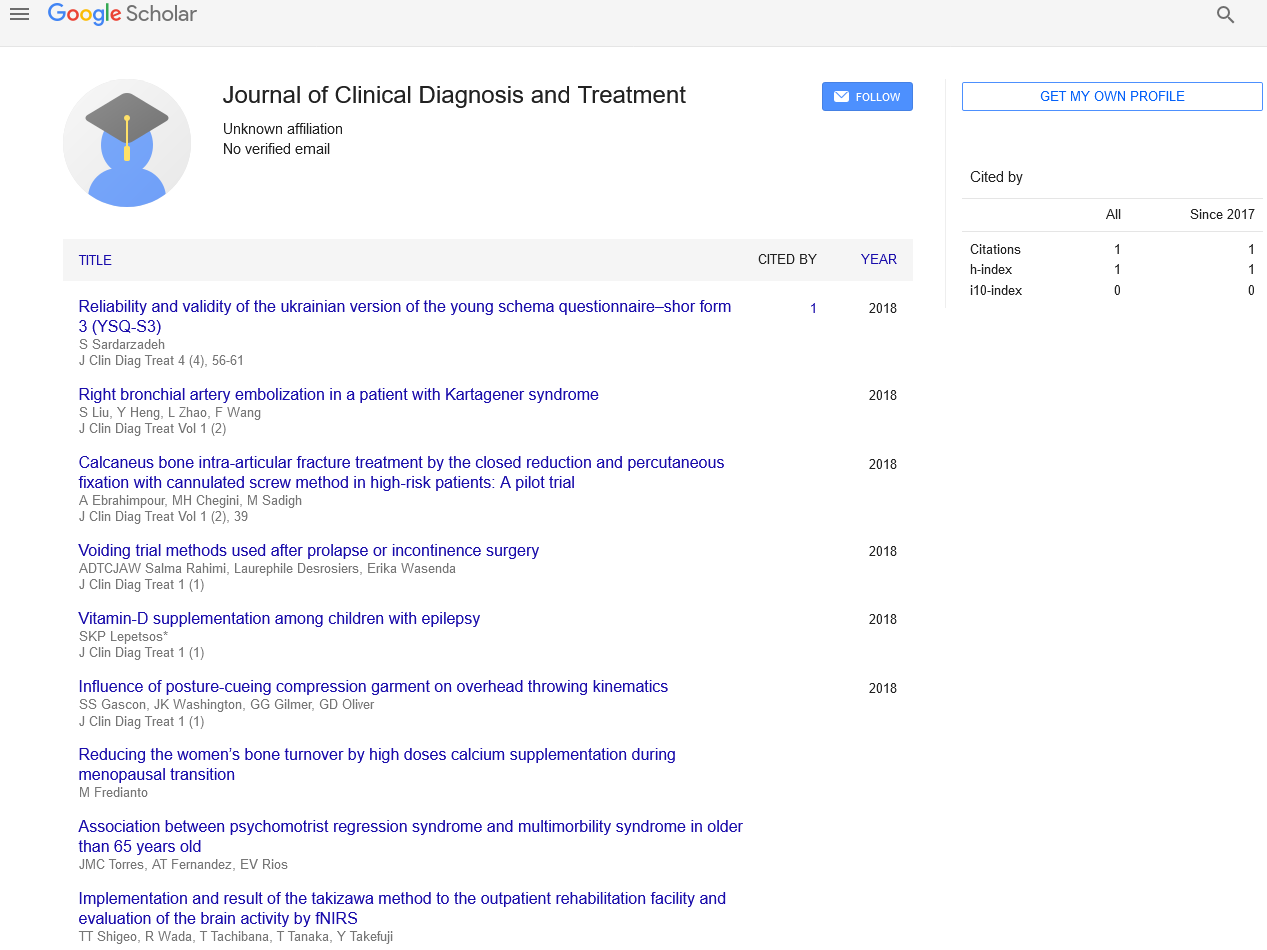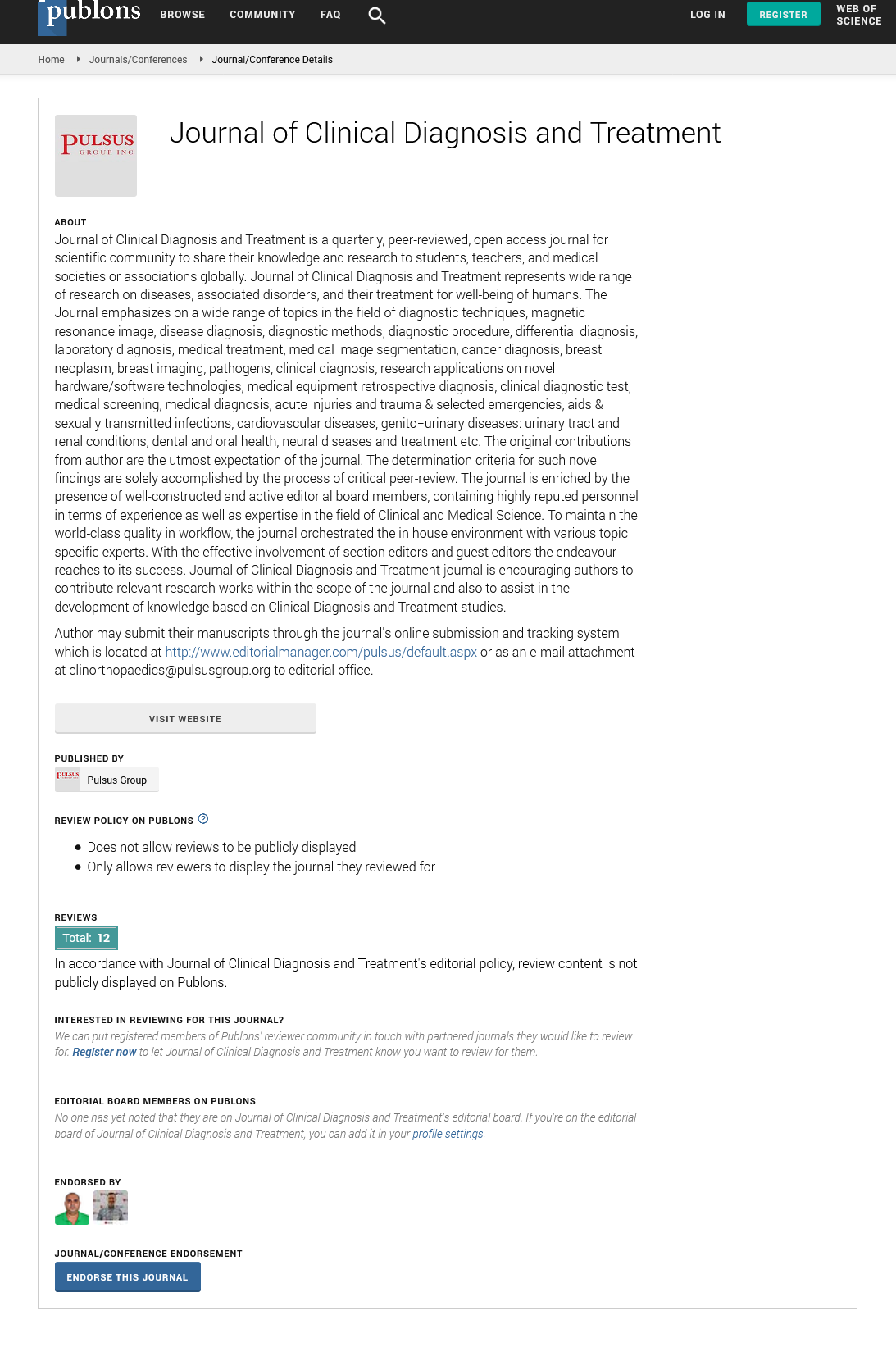Kinds of osteoporotic fractures: Diagnosis & treatment
Received: 03-Jul-2022, Manuscript No. puljcdt-22-5328; Editor assigned: 06-Jul-2022, Pre QC No. puljcdt-22-5328(PQ); Accepted Date: Jul 25, 2022; Reviewed: 15-Jul-2022 QC No. puljcdt-22-5328(Q); Revised: 21-Jul-2022, Manuscript No. puljcdt-22-5328(R); Published: 31-Jul-2022, DOI: 10.37532/puljcdt.22.4(4).1-2
Citation: Smith S. Kinds of osteoporotic fractures: Diagnosis & Treatment. J. clin. diagn. treat.J 2022; 4(4):1-2
This open-access article is distributed under the terms of the Creative Commons Attribution Non-Commercial License (CC BY-NC) (http://creativecommons.org/licenses/by-nc/4.0/), which permits reuse, distribution and reproduction of the article, provided that the original work is properly cited and the reuse is restricted to noncommercial purposes. For commercial reuse, contact reprints@pulsus.com
Abstract
Osteoporosis is a metabolic, systemic skeletal disease that is characterized by deteriorated bone microstructure, decreased bone mass, and diminished bone quality. This therefore causes a tendency toward bone fragility and stable immobilization of the fracture has been accomplished, early mobilization and rehabilitation must be implemented in order to prevent any additional trauma or impairment of the local blood
Key Words
Computed tomography; Osteoporotic fractures; Vertebra cracks; Shattered hips
Introduction
Our bones weaken and become progressively thinner as we age. Bones that have osteoporosis become extremely fragile and more prone to breaking. Until a bone breaks, it frequently develops slowly over many years with no symptoms or discomfort. The spine is where osteoporosis-related fractures most frequently happen. In the United States, there are an estimated 1.5 million vertebral compression fractures, often known as spinal fractures. They occur roughly two times as frequently as other fractures, like shattered hips and wrists that are typically associated with osteoporosis.
Vertebral compression fractures are not always brought on by osteoporosis. However, when the condition is present, a fracture is frequently the patient's initial indication of an osteoporotically compromised skeleton. Osteoporosis is a metabolic, systemic skeletal disease that is characterized by deteriorated bone microstructure, decreased bone mass, and diminished bone quality. This, therefore, causes a tendency toward bone fragility and a general decline in bone strength, which raises the risk of fracture.
Causes of osteoporosis
Osteoporosis is a natural occurrence that happens as people age. Our bones deteriorate as we age. The spine's vertebrae might thin and flatten as they lose strength. As a result, aged patients may become shorter and develop a rounded, humped, or bent-forward appearance to their spine. The danger of fracture is very significant for the compromised vertebrae. When a vertebra that is already weak is subjected to excessive pressure, the front of the vertebra cracks and loses height, resulting in a vertebral compression fracture. Although falls frequently cause vertebral compression fractures, patients with osteoporosis can also sustain fractures while coughing, sneezing, reaching, or twisting.
Osteoporotic fragility fractures include the following characteristics, which make treatment extremely difficult:
1. As a result of extended bed rest and immobility.
2. Because of the pre-existing low bone mass and poor bone quality.
3. Internal fixation stability is diminished when poor bone quality is corrected surgically.
4. Because osteoporosis is a disease of the aged, which means that concomitant systemic disorders in addition to deteriorating pathophysiological circumstances, delayed fracture healing that results in delayed union or nonunion lengthens recovery time.
5. Osteoporotic fragility fractures, have a disproportionately high rate of disability and mortality.
Because of this, the treatment and management of osteoporotic fractures must be distinctly different from that of normal traumatic fractures and must take into account both active anti-osteoporosis therapy and full consideration of orthopedic fracture treatment.
Symptoms
Back discomfort is a result of a spinal compression fracture. Usually, the pain is felt close to the actual break. The most frequent locations for vertebral compression fractures are close to the waist, slightly above it (mid-chest), or below it (lower back).
Motion frequently makes the pain worse, especially when you are shifting positions. Resting or lying down might frequently help to relieve it. The pain may worsen when you cough or sneeze. Although it is uncommon, the discomfort occasionally spreads to other parts of the body (such as the abdomen or down the legs). Nerve discomfort that travels down the legs may be experienced if the fracture is serious enough.
Diagnosis
1. Localized pain, soreness, edema, functional impairment, and malfunction of the fractured limb are examples of general symptoms. Patients with osteoporotic fractures, however, can show no symptoms or just mild, non-specific discomfort, possibly accompanied by exacerbation of some pre-existing sensitivity. Limb function can be mostly normal, and any malfunction might be so small as to be invisible to the untrained eye.
2. Scan using Magnetic Resonance Imaging (MRI). Any injury to the nerves and discs nearby the fracture can be more clearly seen on an MRI. An MRI might be used by your doctor to assess the age of the fracture due to the way it displays bone. Where there is a fresh fracture, the affected bone will stand out more than the adjacent bone in brightness.
3. With regard to diagnosis and therapy, an x-ray examination allows visualization of the fracture site and type as well as assessment of the fracture direction and extent of displacement. X-ray films offer hints towards the diagnosis of osteoporosis, including lower bone density, thinning of trabecular and cortical bone, and expansion of the bone marrow cavity, in addition to providing radiological evidence of the existence of fracture.
4. Bone scanning any aberrant bone activity, including the existence of fractures, can be detected by a bone scan. In some cases, it can also indicate whether a fracture is acute or chronic.
5. CT scan for computed tomography. Bone and soft tissue are both visible on a CT scan. Your doctor can use it to determine whether your fracture has entered the spinal canal, which houses your spinal cord and nerve roots.
Treatment
Fracture reduction, surgical or non-surgical immobilization, therapeutic exercise, and anti-osteoporosis therapy are the therapeutic principles for osteoporotic fractures; ideally, treatment involves an organic mix of these four principles. Once a strong, stable immobilization of the fracture has been accomplished, early mobilization and rehabilitation must be implemented to prevent any additional trauma or impairment of the local blood supply.






